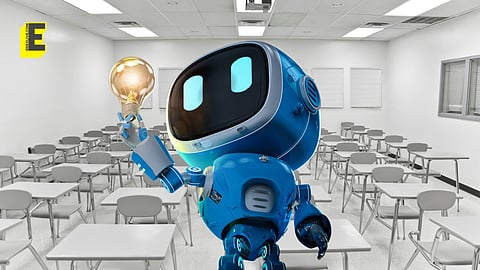"While using AI in school, think about student privacy, how data is managed": Director, Chaman Bhartiya School
In what ways can AI and technology be used to foster creativity and critical thinking in students, rather than just focusing on rote memorisation or test preparation?
Artificial Intelligence (AI) can be used to inspire students to think critically and creatively. Instead of just focusing on memorising facts or preparing for tests, AI can help students explore real-world problems. For example, AI-powered tools can allow students to simulate experiments, build models, or create art and music.
AI can even encourage students to ask questions and think deeply about the information they are given by challenging them to come up with different solutions to problems. This approach encourages active learning and boosts creativity.
What ethical considerations should schools keep in mind when integrating AI into education, especially regarding student data privacy and the role of AI in decision-making?
When we use AI in a school setting, it’s crucial to think about student privacy and how their data is managed. Any data we collect — whether it’s about student performance or behaviour — needs to be kept secure and private. we make sure that both parents and students are informed about how their data will be used.
AI shouldn’t replace important human decisions, like grading or evaluations, because it can sometimes have biases. It’s our responsibility to ensure that AI is used thoughtfully, supporting students without causing any unfair impact.
What role can AI play in bridging the gap between traditional subjects and modern digital skills, such as coding, robotics, and data science?
We believe AI can help connect subjects like Math, Science, and History with modern skills like coding, robotics, and data science. For example, AI can assist in teaching coding by offering interactive programming lessons that students can do at their own pace. It can also be used to teach data analysis by allowing students to work with real data sets.
This helps students understand both traditional academic subjects and the new digital skills they’ll need in the future, making learning more relevant to today’s world.


